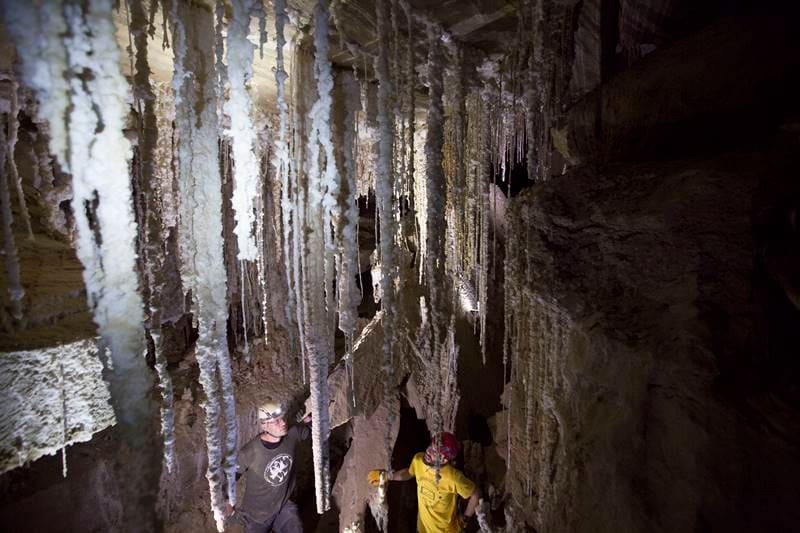-

Israeli cave explorers said that a salt cave with striking stalactites near the Dead Sea is the world's longest, beating the previous record-holder in Iran. The cave named Malham, stretching over 10 kilometres, runs through Mount Sodom, Israel's largest mountain, and spills out to the southwest corner of the adjacent Dead Sea. Malham became known to researchers through the work of Amos Frumkin, founder and director of the Hebrew University's Cave Research Centre, who in the 1980s mapped around five kilometres of it. But in 2006, researchers mapped over six kilometres of the N3 cave in southern Iran's Qeshm island, granting it the widely recognised status of the world's longest salt cave. (AP Photo)
-
Pale salt stalactites hang from the ceilings, and some of the walls sparkle with salt crystals. (Reuters Photo)
-
Drops of salty water are visible at the tips of some of the stalactites. (AP Photo)
-
Mount Sodom is essentially a huge salt block covered by a thin but resilient layer of cap rock. (AP Photo)
-
The rare desert rains find their way through cracks in the cap rock and dissolve the salt to form small caves that flow down toward the Dead Sea. (Reuters Photo)
-
Much of the cave's interior is covered by a fine dust that blows in from the desert. Massive slabs of salt, some amber-coloured from dust and minerals, jut out in dramatic formations. (AP Photo)
-
The 10-km (6-mile)-long warren of underground passages and chambers in Mount Sodom, overlooking the Dead Sea, was mapped out over two years by cavers from nine countries led by the Hebrew University of Jerusalem. (Reuters Photo)
-
Reporters touring the site clambered and crawled through the narrow passages before reaching the "wedding hall," where hundreds of white stalactites of various shapes and lengths created a festive backdrop. (Reuters Photo)
-
A general view shows part of the interior of the Malham Cave, which Israeli researchers say is the world's longest salt cave, in Mount Sodom near the Dead Sea, Israel. (Reuters Photo)